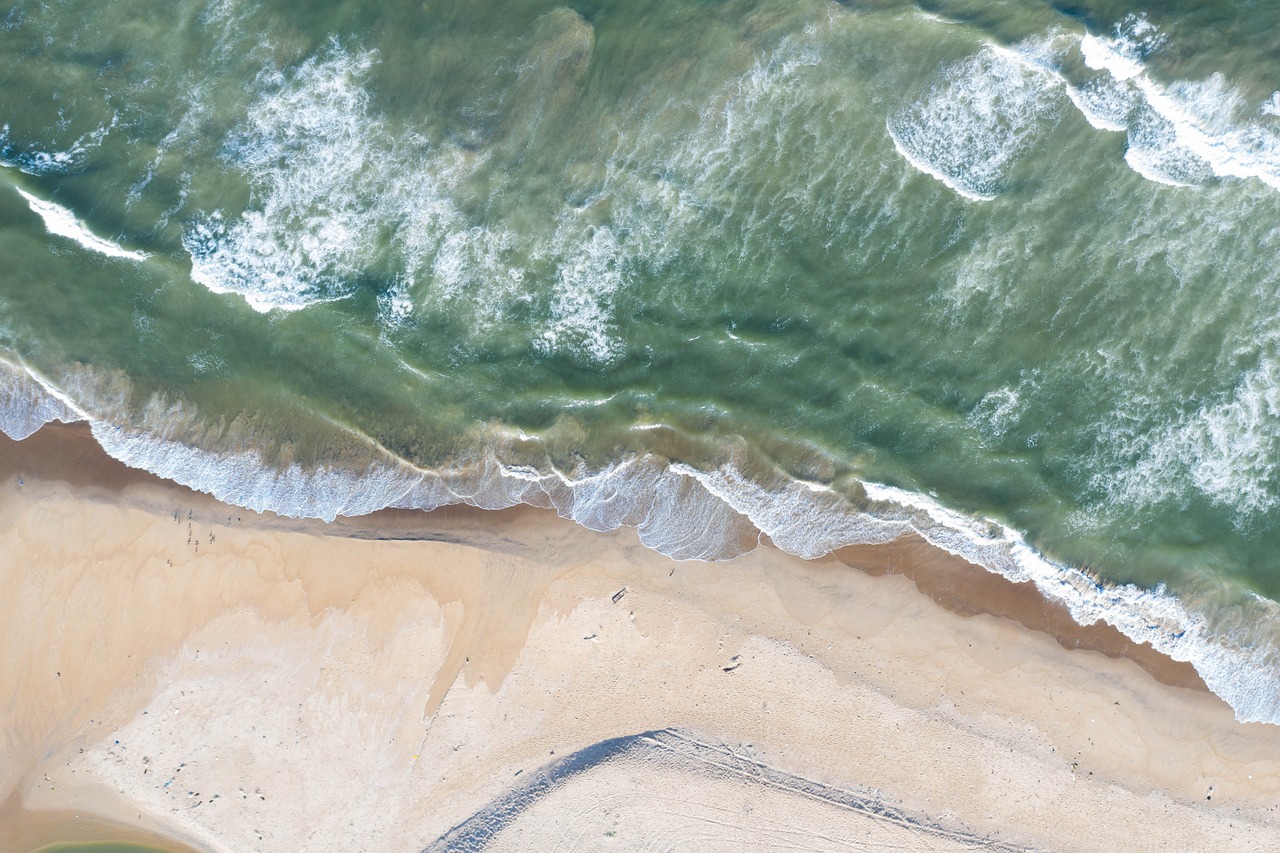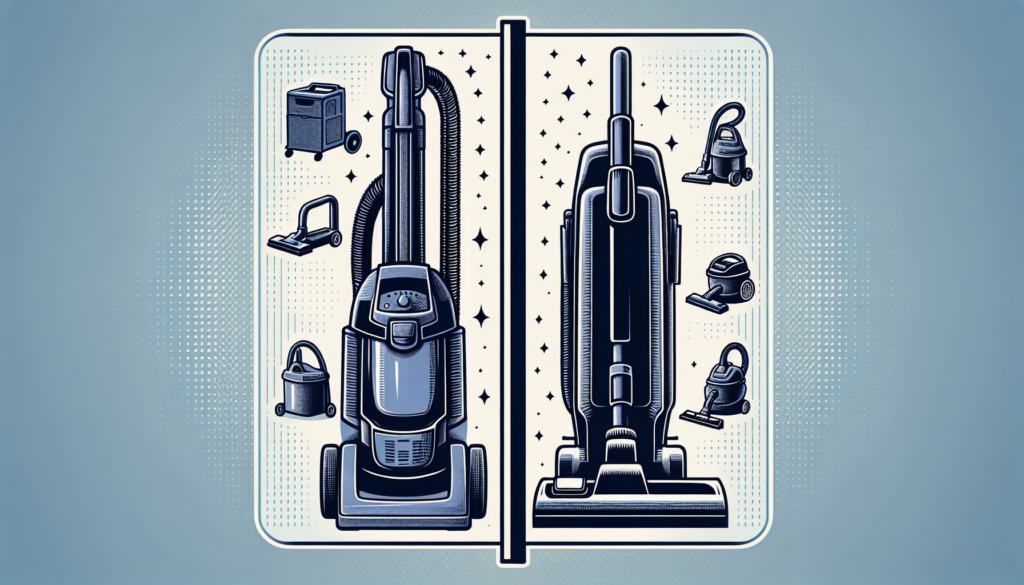Thinking about buying a new drone? Before you make that purchase, there are a few things you should know. In this article, we will provide you with expert buying guides and essential tips to ensure you make a confident and informed decision. At BuySellCloud.com, we pride ourselves on being your trusted source for all your shopping needs. Whether you’re a beginner or a seasoned flyer, our comprehensive product insights and guidance will help you find the perfect drone for you. So, before you take flight, read on to discover what you need to know before buying a new drone.

Understanding Drones
Drones have become increasingly popular in recent years, revolutionizing various industries and capturing the imagination of hobbyists. But what exactly is a drone? In simple terms, a drone is an unmanned aerial vehicle (UAV) that is remotely controlled or can fly autonomously. These aircraft can range in size, from compact and lightweight toy drones to sophisticated professional models equipped with advanced features.
Brief history of drones
While drones may seem like a recent technological innovation, their history actually dates back several decades. The first known concept of a drone was developed during World War I, with the introduction of pilotless aircraft used for military purposes. However, it wasn’t until the late 20th century that drones began to take shape as we know them today.
In the 1980s, the modern development of drones gained momentum, primarily driven by military advancements. These early drones were primarily used for surveillance and reconnaissance missions. Over time, the technology behind drones continued to evolve, leading to the incorporation of GPS capabilities, improved flight control systems, and advanced camera systems.
Legal regulations for drone use
As the popularity of drones has grown, so too have the regulations surrounding their use. It is important to understand and abide by these regulations to ensure safe and responsible drone operation. The specific regulations may vary from country to country, so it is essential to familiarize yourself with the rules and requirements in your area.
Some common regulations include registering your drone with the aviation authority, adhering to height and distance restrictions, and respecting privacy laws. Additionally, there may be restrictions on flying drones in certain locations, such as airports or national parks. It is crucial to research and comply with all applicable regulations to ensure both your own safety and the safety of others.
Types of Drones
Now that you have a basic understanding of what a drone is, let’s explore the different types of drones available on the market.
Consumer drones
Consumer drones, as the name suggests, are designed for recreational use by enthusiasts and hobbyists. These drones are generally affordable and equipped with user-friendly features, making them accessible to beginners. They often come with built-in cameras, allowing users to capture aerial photos and videos. Consumer drones are perfect for leisurely flights and exploring the capabilities of drone technology.
Professional drones
On the other end of the spectrum, we have professional drones that are designed for commercial use. These drones are commonly used in industries such as filmmaking, photography, agriculture, surveying, and more. Professional drones offer advanced features like higher payload capacity, longer flight times, and higher-resolution cameras. They are typically more expensive and require a higher skill level to operate.
Racing drones
For those seeking an adrenaline rush, racing drones are specifically designed for high-speed racing competitions. These drones are built to be lightweight and agile, with powerful motors that allow for rapid acceleration and tight maneuverability. Racing drones often come with FPV (first-person view) capabilities, allowing pilots to experience the thrill of flying at breakneck speeds from a real-time video feed.
Toy drones
Toy drones are small, inexpensive, and primarily designed for children. They offer a fun and interactive way to introduce young individuals to the world of drones. While toy drones may lack advanced features found in other types, they serve as a great entry point for beginners and can be a source of entertainment for people of all ages.
Photography drones
Photography drones, also known as aerial photography drones, are specifically designed for capturing stunning aerial imagery and videos. These drones often come equipped with high-quality cameras that offer stability and precise control for capturing professional-grade photographs and videos. Photography drones are perfect for photographers and videographers who want to add a unique perspective to their work.
FPV drones
FPV (first-person view) drones are equipped with a live video streaming feature that allows pilots to see what the drone sees in real-time through a headset or goggles. This immersive experience enhances the thrill of flying and is popular among drone racing enthusiasts. FPV drones often come with advanced flight modes and high-performance components to ensure a seamless flight experience.
Selfie drones
As the demand for capturing personal moments from unique angles grew, selfie drones were developed. These drones are compact and portable, making them convenient for capturing selfies or group photos from the air. Selfie drones usually come with intelligent flight modes that make it easy for beginners to take impressive aerial shots effortlessly.

Considerations Before Buying
Before you embark on your drone-buying journey, there are several key factors you should consider. These considerations will help you narrow down your options and find the drone that best suits your needs and preferences.
Intended use
First and foremost, think about how you plan to use your drone. Are you interested in aerial photography, racing, or simply flying for recreational purposes? Understanding your intended use will help you determine which features and capabilities are most important to you.
Skill level
Consider your level of experience when it comes to flying drones. If you are a beginner, it is advisable to start with a user-friendly model that offers stability and easy-to-use controls. On the other hand, if you are an experienced pilot, you may be more interested in advanced features and greater maneuverability.
Budget
Drones come in a wide range of prices, so it’s important to establish a budget before starting your search. Consider how much you are willing to invest in a drone and factor in any additional costs for accessories or necessary upgrades.
Camera quality
If photography or videography is a priority, pay attention to the camera quality of the drone you are considering. Look for drones with higher resolution cameras, image stabilization features, and the ability to adjust camera settings.
Flight time and range
Flight time refers to how long the drone can stay in the air on a single battery charge, while range refers to the maximum distance the drone can fly from the controller. Consider how important these factors are to you based on your intended use.
Portability
If you plan to travel with your drone or frequently transport it to different locations, consider the size, weight, and overall portability of the drone. Compact and foldable drones are particularly convenient for traveling.
Battery and charging
Look into the battery life of the drone and consider purchasing extra batteries if needed. Also, consider the charging time required for the batteries and whether the drone comes with a convenient charging method.
Controller options
Think about the type of controller that comes with the drone and whether it suits your preferences. Some drones use traditional controllers, while others can be controlled through a smartphone app or even gesture control.
Spare parts availability
Drones can be prone to accidents and crashes, so it’s important to consider the availability of spare parts for the specific model you are interested in. Check if spare parts are easily accessible and affordable.
Customer support and warranty
Research the customer support and warranty offered by the drone manufacturer. A reliable warranty and responsive customer support can provide you with peace of mind in case of any issues or malfunctions.
Researching Drone Brands
With so many drone brands available, it can be overwhelming to choose the right one. Conducting thorough research on drone manufacturers is crucial to ensure you make an informed decision.
Top drone manufacturers
Familiarize yourself with the top drone manufacturers in the industry. Some well-known brands include DJI, Autel Robotics, Parrot, Yuneec, and Holy Stone. These brands have a proven track record and offer a wide range of drones to cater to different needs.
Reliability and reputation
Look into the reliability and reputation of the drone brands you are considering. Read reviews, testimonials, and evaluate the overall customer satisfaction with their products. A reputable brand is more likely to deliver a quality drone that meets your expectations.
Product reviews and ratings
Take the time to read product reviews and ratings from trusted sources. These reviews can provide valuable insights into the performance, features, and overall quality of the drones you are interested in. Look for reviews that are objective and comprehensive.
Comparison websites and forums
Comparison websites and forums are excellent resources for comparing different drone models and brands. These platforms often feature detailed side-by-side comparisons, pros and cons, and user discussions that can help you make an informed decision.
Social media groups and influencers
Joining social media groups dedicated to drones or following influential individuals in the drone community can provide you with up-to-date information, tips, and recommendations. Engaging with fellow drone enthusiasts can offer valuable insights and guidance in your drone-buying journey.

Purchasing Options
Once you have narrowed down your options and selected the ideal drone for your needs, it’s time to consider the purchasing options available to you.
Online retailers
Online retailers such as Amazon, Best Buy, and specialized drone retailers offer a wide range of drones for purchase. Shopping online provides convenience and often allows for easy comparison shopping. Be sure to read product descriptions, customer reviews, and check for any ongoing promotions or deals.
Physical stores
If you prefer a hands-on shopping experience or want to get a feel for the drone before purchasing, consider visiting physical stores that specialize in drones or electronics. In-store experts can provide personalized advice and recommendations based on your specific requirements.
Authorized dealers
Another option is to purchase your drone directly from authorized dealers. Authorized dealers are official partners of drone manufacturers and often offer additional benefits such as extended warranties and dedicated customer support. Check the manufacturer’s website for a list of authorized dealers near you.
Understanding Drone Features
As you delve deeper into the world of drones, you will come across various features and capabilities. Understanding these features will help you make an informed decision when selecting a drone.
GPS/navigation capabilities
Many drones now come equipped with GPS technology, allowing for precise navigation and waypoint setting. GPS-enabled drones can provide accurate positioning and significantly improve flight stability.
Obstacle avoidance
Advanced drones often feature obstacle avoidance systems that use sensors and cameras to detect and avoid obstacles in real-time. This feature enhances safety and reduces the risk of accidents during flight.
Follow-me mode
Follow-me mode allows the drone to track and follow a designated target, typically the remote control or a mobile device. This feature is particularly useful for capturing dynamic footage and action shots.
Automatic return-to-home
In case of loss of signal or low battery, drones with automatic return-to-home capabilities will safely and autonomously return to their takeoff location. This feature prevents accidental flyaways and ensures the drone’s safe retrieval.
Intelligent flight modes
Intelligent flight modes are pre-programmed modes that allow the drone to perform specific maneuvers or capture unique shots. Common intelligent flight modes include orbit mode, dronie mode, and waypoint mode.
Payload capacity
Some drones have a payload capacity that allows them to carry and deliver small objects or specialized equipment. This feature is particularly useful in industries such as delivery or inspection.
Live video streaming
Live video streaming enables real-time video transmission from the drone’s camera to a connected device, such as a smartphone or tablet. This feature allows you to monitor the drone’s perspective during flight.
Gimbal stabilization
A gimbal is a mechanism that stabilizes and keeps the camera level during flight. Drones equipped with a gimbal provide smooth and stable footage, reducing the effects of vibrations and movements.
Flight control modes
Flight control modes determine how the drone responds to control inputs. Common flight control modes include manual mode, which requires manual control inputs for flight, and altitude hold mode, which automatically maintains a specific altitude.
Upgradable firmware
Some drones allow for firmware upgrades, which can improve the drone’s performance, enhance safety features, and introduce new functionalities. Upgradable firmware ensures that your drone stays up to date with the latest advancements in technology.
Drone Accessories
To maximize the functionality and enjoyment of your drone, consider investing in a range of accessories.
Extra batteries
Having extra batteries is essential for extending the flight time of your drone. This gives you the flexibility to fly for longer periods without having to wait for batteries to recharge.
Propellers
Propellers are crucial components of a drone, and having spare propellers on hand is recommended. Accidents or collisions can damage propellers, and having replacements readily available ensures you can continue flying without interruption.
Carrying cases
Investing in a sturdy and well-padded carrying case will protect your drone during transportation and storage. Look for cases that offer compartments for accessories and specific drone models for a snug fit.
ND filters
Neutral Density (ND) filters reduce the amount of light entering the camera lens, allowing for more balanced exposure in bright conditions. ND filters are particularly useful when capturing aerial footage on sunny days.
Gimbal protectors
Gimbal protectors are small accessories that shield the camera gimbal and lens from damage during transport or storage. They help prevent any accidental movement or impact that could harm the sensitive gimbal system.
Memory cards
Make sure to have ample storage space by investing in high-quality memory cards for your drone’s camera. UHS-I U3 or UHS-II memory cards are recommended for capturing and storing high-resolution photos and videos.
Tablet/smartphone mount
A tablet or smartphone mount attaches to the drone’s controller, providing a secure and convenient way to view the live video feed and control the drone’s functions. This accessory enhances your flying experience and allows for easier navigation.
Landing pads
Landing pads provide a designated area for takeoff and landing, protecting your drone’s propellers from dust, dirt, and debris. They also provide a visual marker for landing, making it easier to land accurately.
Propeller guards
Propeller guards are protective frames that surround the drone’s propellers. They offer an extra layer of safety, particularly for beginners or when flying in confined spaces. Propeller guards help protect both the drone and surroundings from potential damage.
Range extenders
Range extenders are external antennas or signal amplifiers that improve the range and signal strength between the drone and the remote controller. This accessory can help improve connectivity and extend the drone’s operational distance.
Learning to Fly
Before taking to the skies, it’s important to familiarize yourself with the basics of drone piloting and adhere to safety guidelines.
Drone piloting basics
Take the time to learn the fundamentals of drone piloting. Practice basic maneuvers such as takeoff and landing, hovering, and controlling the drone’s movement in different directions. Start with small, controlled flights and gradually increase your flying skills.
Safety guidelines
Always prioritize safety when flying your drone. Follow local regulations and airspace restrictions, maintain line of sight with your drone, and avoid flying near people, buildings, or restricted areas. Practice safe battery handling and be mindful of weather conditions that may affect flight stability.
Flight training resources
Utilize online resources, tutorials, and flight training courses to enhance your drone piloting skills. Many drone manufacturers and organizations offer educational materials that cover everything from basic operation to more advanced flight techniques.
Indoor vs. outdoor flying
Consider whether you prefer flying your drone indoors or outdoors. Indoor flying offers a controlled environment without external factors such as wind, but space may be limited. Outdoor flying allows for more expansive flights but requires careful consideration of weather conditions and flight restrictions.
Practice areas and restrictions
Identify suitable practice areas that are open and spacious, preferably away from populated areas. Some countries may have designated areas for drone flying, such as parks or model aircraft clubs. Be sure to respect any restrictions or guidelines in these areas.
Troubleshooting common flight issues
It’s not uncommon to encounter flight issues or challenges while piloting a drone. Take the time to familiarize yourself with common troubleshooting techniques for issues like signal loss, GPS errors, or sudden drone behavior. Understanding how to resolve these issues can help you have a more enjoyable flying experience.
Drone Maintenance and Care
Proper maintenance and care are crucial for ensuring the longevity and optimal performance of your drone.
Cleaning and inspection
Regularly clean and inspect your drone to ensure it remains in good condition. Remove any dust, dirt, or debris from the drone’s exterior and camera lens. Check for any loose or damaged components and make any necessary repairs.
Software updates
Stay up to date with the latest firmware updates released by the manufacturer. These updates often include bug fixes, performance improvements, and new features. Regularly update your drone’s software to enhance its functionality and increase its lifespan.
Storage and transportation
Store your drone in a cool, dry, and dust-free environment. Avoid exposing the drone to extreme temperatures or direct sunlight for prolonged periods. When transporting your drone, use a proper carrying case or bag to protect it from any impacts or damage.
Battery maintenance
Follow the manufacturer’s guidelines for proper battery maintenance. Avoid draining the battery completely and charge it using the recommended charger. If you plan on storing your drone for an extended period, ensure the battery is stored at the correct charge level to prevent damage or degradation.
Winter flying precautions
Flying a drone in cold weather requires additional precautions. Cold temperatures can reduce battery performance and affect flight stability. Keep batteries warm prior to flight, fly in shorter intervals, and be mindful of temperature-related flight restrictions.
Repairs and spare parts
In the event of a crash or damage, it may be necessary to repair or replace certain components of your drone. Check if the manufacturer offers repair services or if spare parts are readily available. Follow proper repair procedures or consult an authorized technician if needed.
Taking out Drone Insurance
Considering drone insurance is essential to protect yourself from potential liability and cover any damages or losses that may occur during flight.
Why drone insurance is important
Drone insurance protects you financially in case of accidents, damage to property, or injuries caused by your drone. Accidents can happen, and having insurance coverage gives you peace of mind and protects you from potential legal and financial setbacks.
Coverage options
Insurance providers offer various coverage options for drone owners. Common coverage includes liability insurance, which covers damages to third-party property or injuries caused by your drone. Some policies may also provide coverage for theft, loss, or damage to your own drone.
Cost considerations
The cost of drone insurance depends on several factors, such as the drone’s value, intended use, and coverage limits. Research different insurance providers, compare quotes, and consider the level of coverage you need based on your drone’s value and intended use.
Choosing a reliable insurance provider
When selecting an insurance provider, prioritize reliability, reputation, and customer service. Look for insurance providers that specialize in drone insurance and have positive reviews from other drone owners. Consider factors such as claims processing, coverage limits, and any additional benefits offered.
By understanding drones, researching the available options, and considering your specific needs and preferences, you can confidently navigate the world of drones and make a well-informed purchase decision. Whether you’re a hobbyist, professional, or someone looking to explore the possibilities of drone technology, the right drone and accessories will open up a world of creative opportunities and exciting adventures.




